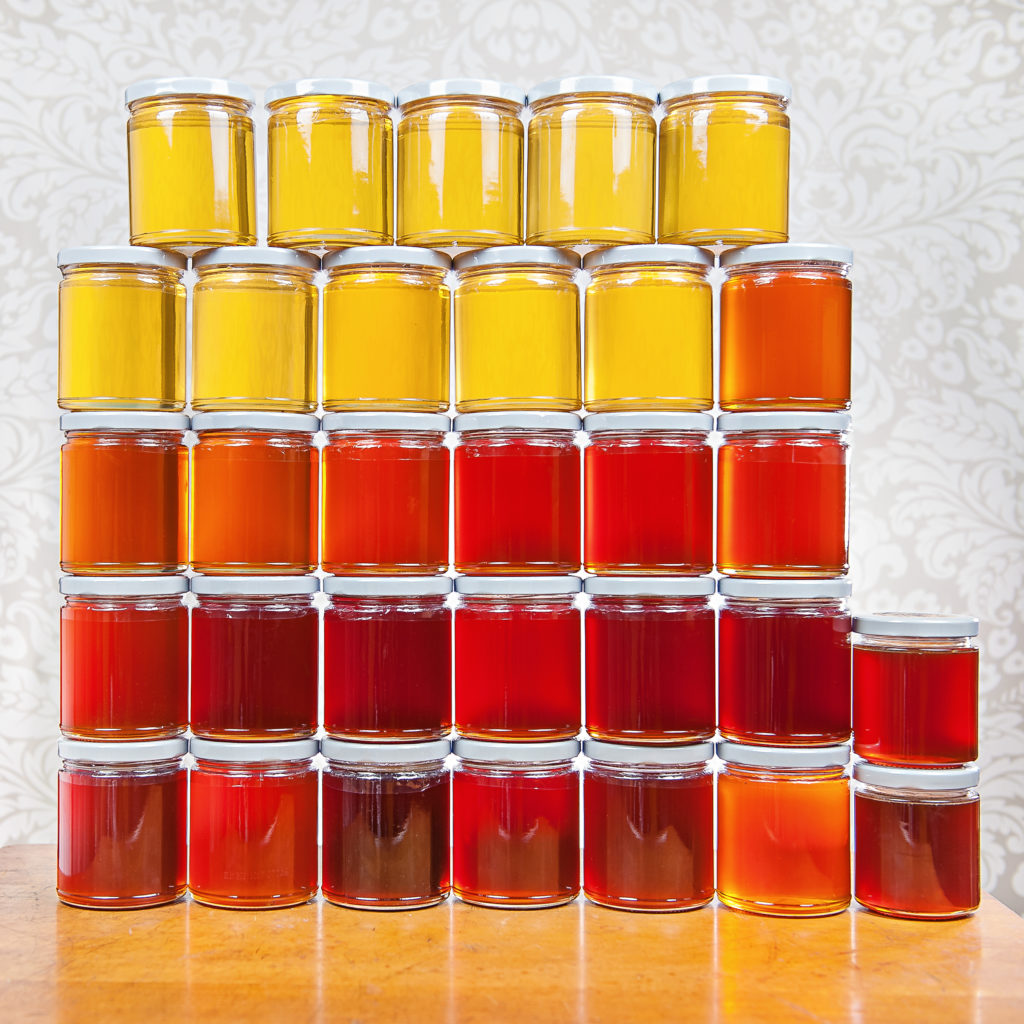
Our honey season is officially over and we’ve got the results of the whole year in one photo. We harvest honey on a weekly, running basis, so every week and location pretty much gets its own batch. A batch is usually somewhere between 30-70 lbs of honey, and I keep all the 4 locations separate from each other, so you can really see the tiny changes that happen location to location and week to week as different flowers are blooming. We’ve got a guide linked here that goes over when the honey came off the hives, from which apiary, and some basic tasting notes and possible floral sources. All of our honeys are pretty much wildflower honeys since we don’t move our hives for pollination services – the bees find what they find and I’ve got very little say in which flowers they visit. I usually have a good idea of what’s blooming when, so I can usually tell what the major floral source is, but the rest can be quite the toss up! In general the flavors run from a very mild, light, honey with delicate floral notes, to a classic wildflower/clover honey in the middle of the season, and then notes of molasses, maple syrup, and malt work in towards late summer and early fall.
In the photo above:
- Top Row: Batches A through E
- Row 2: Batches F through K
- Row 3: Batches L through Q
- Row 4: Batches R through W
- Bottom Row: Batches X – EE with BB and DD stacked on the side
We also had a few good batches of Spotted Lanternfly honey! What?! Yes. A destructive and invasive pest, the spotted lanternfly is a sap sucker. It filters out the amino acids from tree sap which means its waste product, called honeydew, is essentially sugar water (it’s complicated because it’s not really ‘waste’ as we think of waste – their ‘digestive’ system runs like a filter on a high pressure fire hose – they filter out the amino acids and let the sugar and water pass through at rates up to their whole body weight in one hour because of the high pressure of the sap in the tree [yep, more than you ever wanted to know about bug digestion!]). You’ll see a sticky residue underneath a tree infested with spotted lanternflies, and sometimes you can even see it raining under the tree. That’s all just sugar water, and of course Spotted Lanternfly infestations peak at their adult stage in the end of July, typically when we have a slow down or stoppage (dearth) in nectar production from flowers due to summer hot and dry weather. Naturally, the bees collect it and bring it home, turning it into honey just like they would with flower nectar. The resulting honey is dark, richly flavored with notes of molasses, malt, and maple syrup, and has a touch of a smoky note. It’s not everyone’s cup of tea, but I love pairing it with blue cheese or making a simple syrup (half honey, half water, leave it in the fridge overnight) for cocktails like an Old Fashioned. Throughout the world, honey bees get up to the same mischief with other sap sucking bugs’ honeydew, from aphids to scale insects and some moths and caterpillars as well, so this is nothing new!
What a year it’s been! I’ll have some end of year statistics coming up in the next post, including data on how many jar returns we’ve had over the year! Remember, you can always return your empty jar to be sanitized and used again. It’s exactly why we use glass – it’s nearly infinitely reusable, and the world doesn’t need more plastic.
